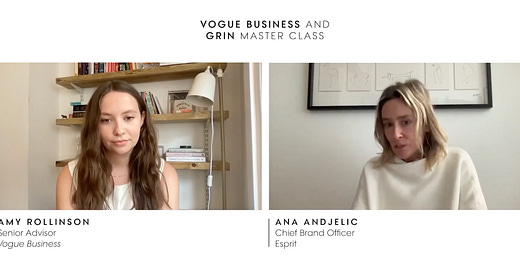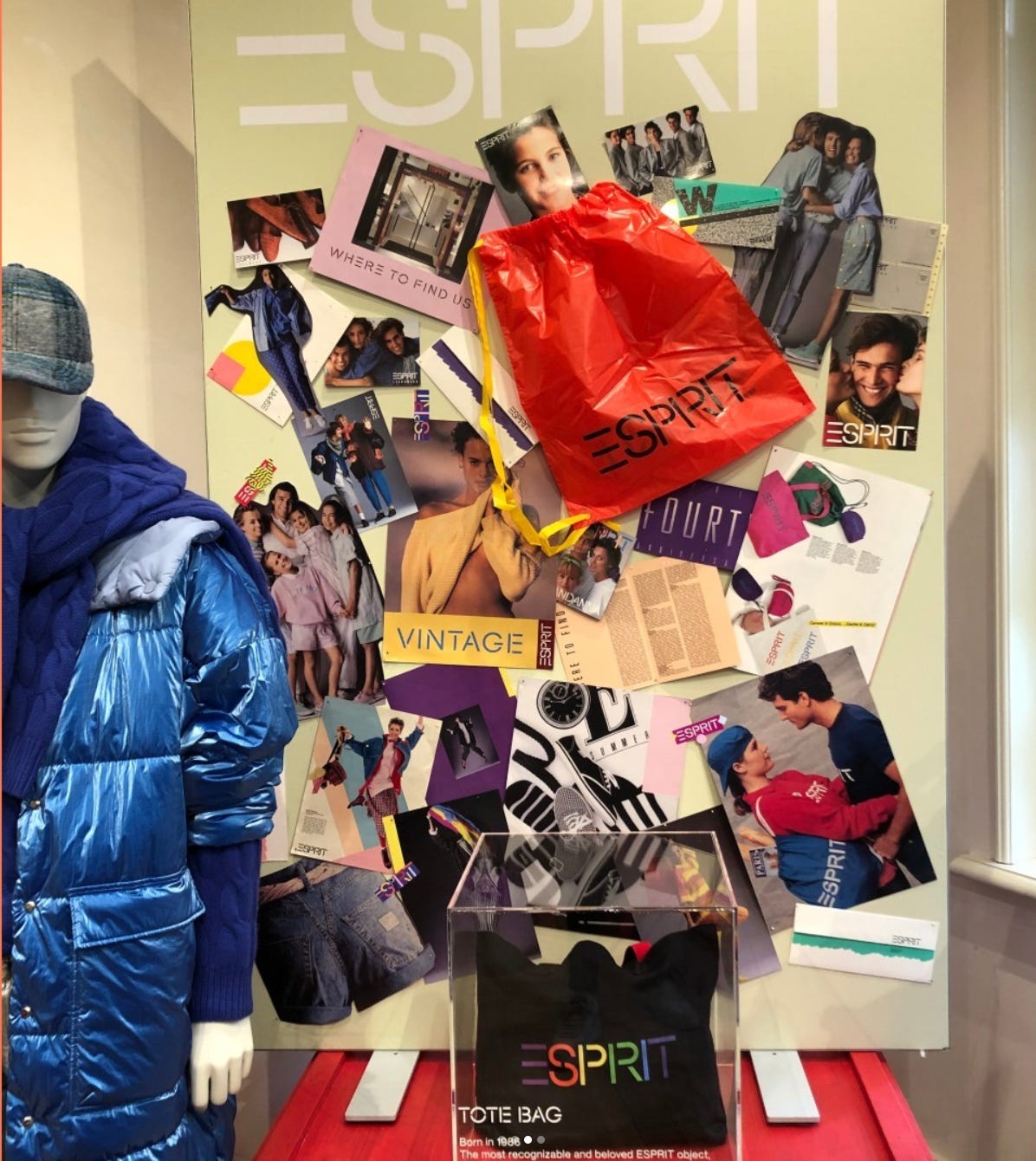Welcome to the Sociology of Business. For those new here, in my last analysis, The Creative Class Starter Kit, I outlined the rules of the creative money aesthetics. Find my book The Business of Aspiration on Amazon and find me on Instagram, Twitter, and Threads.
I spoke recently with Vogue Business and Nick Westergaard of OnBrand about revival of ESPRIT, our global strategy, creative vision, and growth plans. Listen to these conversations here and here.
The opening of a new store leads to an average 37 percent increase in overall web traffic for brands, according to International Council of Shopping Centers. Biased or not, the study confirms what marketers know: the halo effect is real, and investing in physical retail is today cheaper than any of the performance media buys.
First to discover this were online-first brands of the past decade, furiously opening new stores (see the stretch of Spring street in NYC between Lafayette and Broadway). From Glossier to Allbirds, this block is a testament that nothing is still more cost-effective in customer acquisition and long-term loyalty than physical retail. The catch is to never again think of your physical store as a sales and distribution channel.
In traditional retail, a core user activity is a product purchase. This activity maps closely to how the retail business is monetized: To increase product purchases, retailers expand their footprint by opening more stores and featuring more products.
Today, a product purchase is not a core user activity. Instead, what’s core to users may be participating in a community, having access to high-quality lifestyle content, benefiting from personalization, attending events, identifying with an aesthetic POV or a social message, enjoying VIP membership perks, or experiencing a superior delivery service or a celebrity connection. Most successful retailers today monetize their businesses around these activities. Their business models do not revolve around their products, and their physical stores reflect this shift.
The most successful brands design their stores around consumers’ pattern of engagement with a company. Here are some of the more popular ways retailers create, deliver and capture user value with physical stores.
To access the rest of this analysis, including five strategies of transforming your own physical stores, choose one of the paid subscription options below:
Keep reading with a 7-day free trial
Subscribe to The Sociology of Business to keep reading this post and get 7 days of free access to the full post archives.









